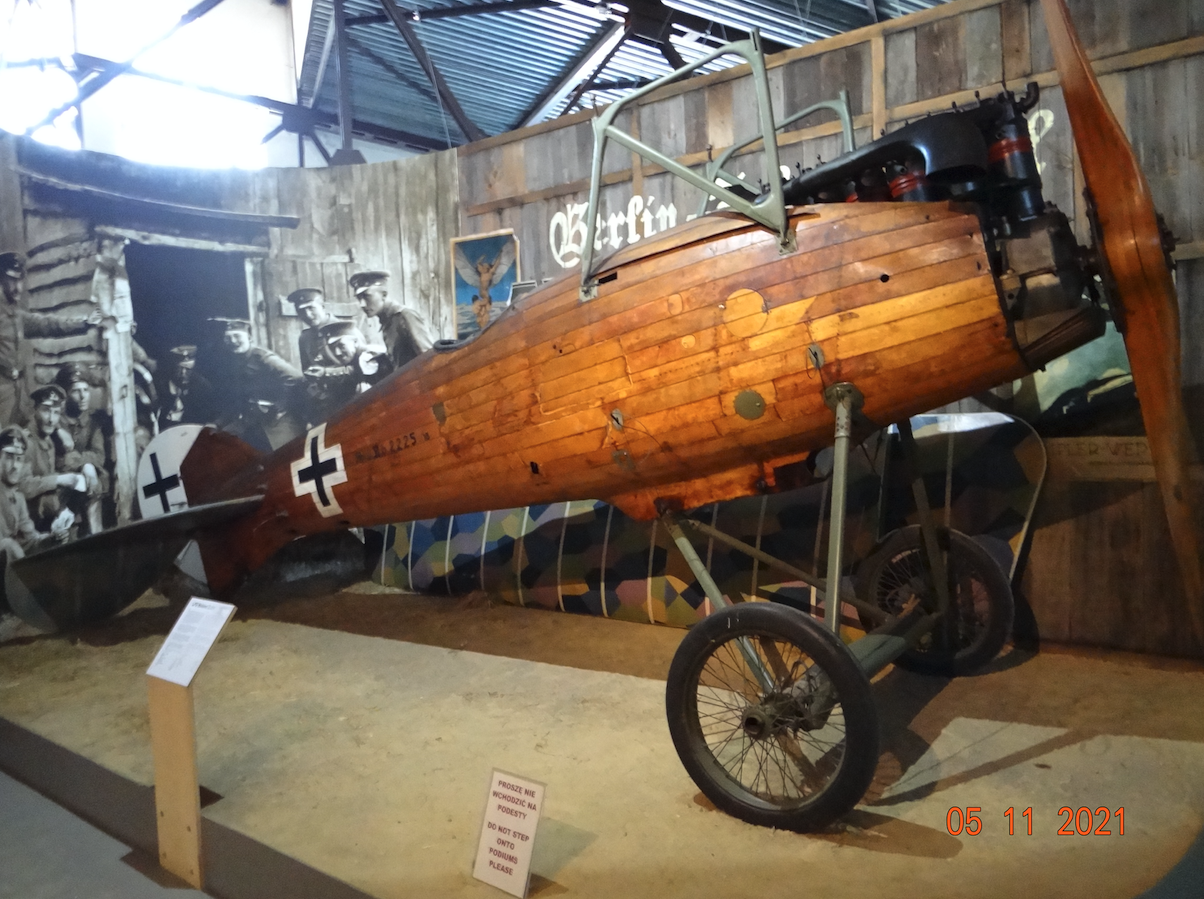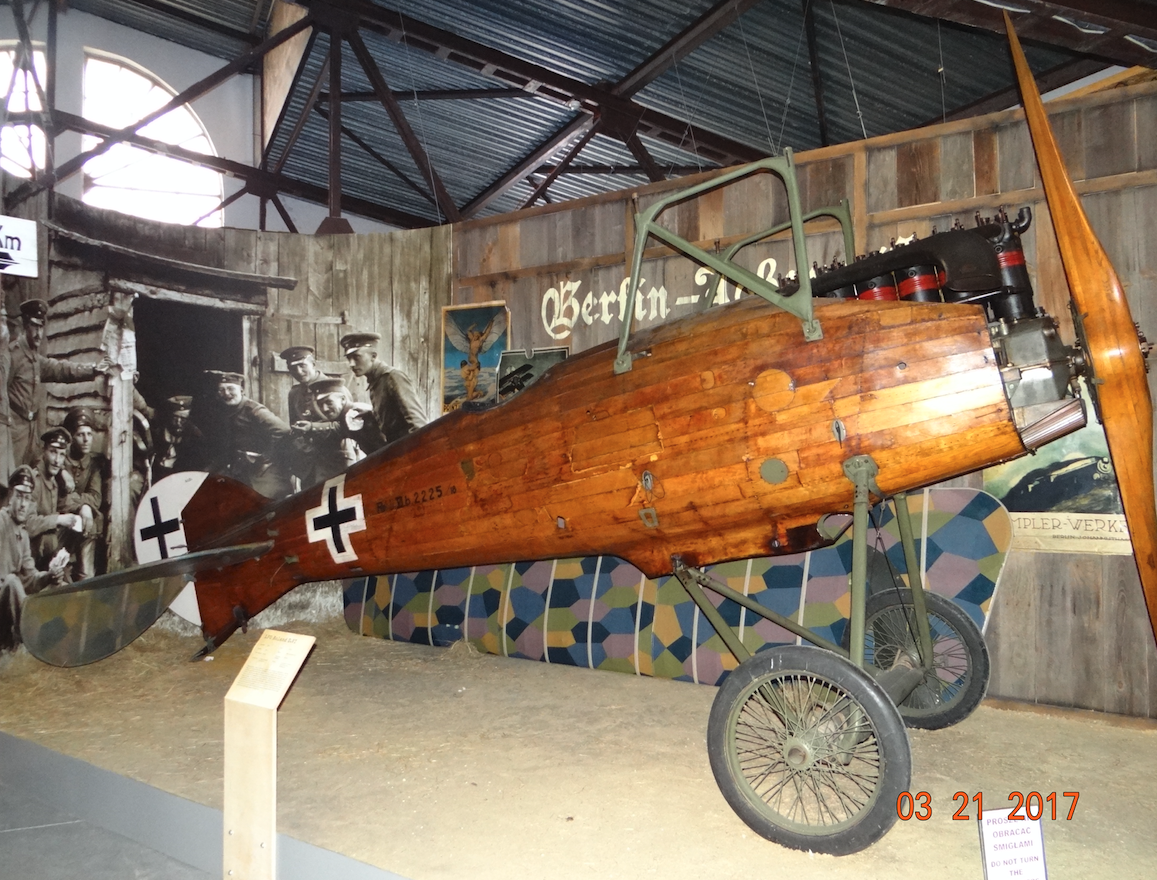Kraków 2022-11-28
LFG Roland D.VI.
LFG Roland D.VI aircraft was a German aircraft developed at the end of the Great World War. The aircraft was designed at the Luft-Fahrzeug-Gesellschaft factory in Berlin, which is why the aircraft was marked with the abbreviation LFG. The aircraft made its first flight in January 1918.
The LFG Roland D.VI aircraft was built as a single-seater. It was supposed to be a fighter aircraft, but it turned out to be weak and was sent to pilot training. Only 359 examples were built. The aircraft received a classic biplane layout. The structure of the plane is wooden. The Benz D.III in-line engine with a power of 136 kW (185 hp) was used for the drive. Armament: two machine guns permanently mounted, synchronized with the rotation of the propeller. Spandau 7.92 mm machine guns were used.
The only surviving LFG Roland D.VI aircraft in the world is in the Polish Aviation Museum in Krakow. The plane has no wings.
Data T-T LFG Roland D.IV:
Span 9.40 m. Length 6.32 m. Height 2.80 m. Bearing area 22.13 m2. Curb weight 650 kg. Take-off weight 820 kg. Top speed 180 km/h. Flight time 2 hours.
Written by Karol Placha Hetman


